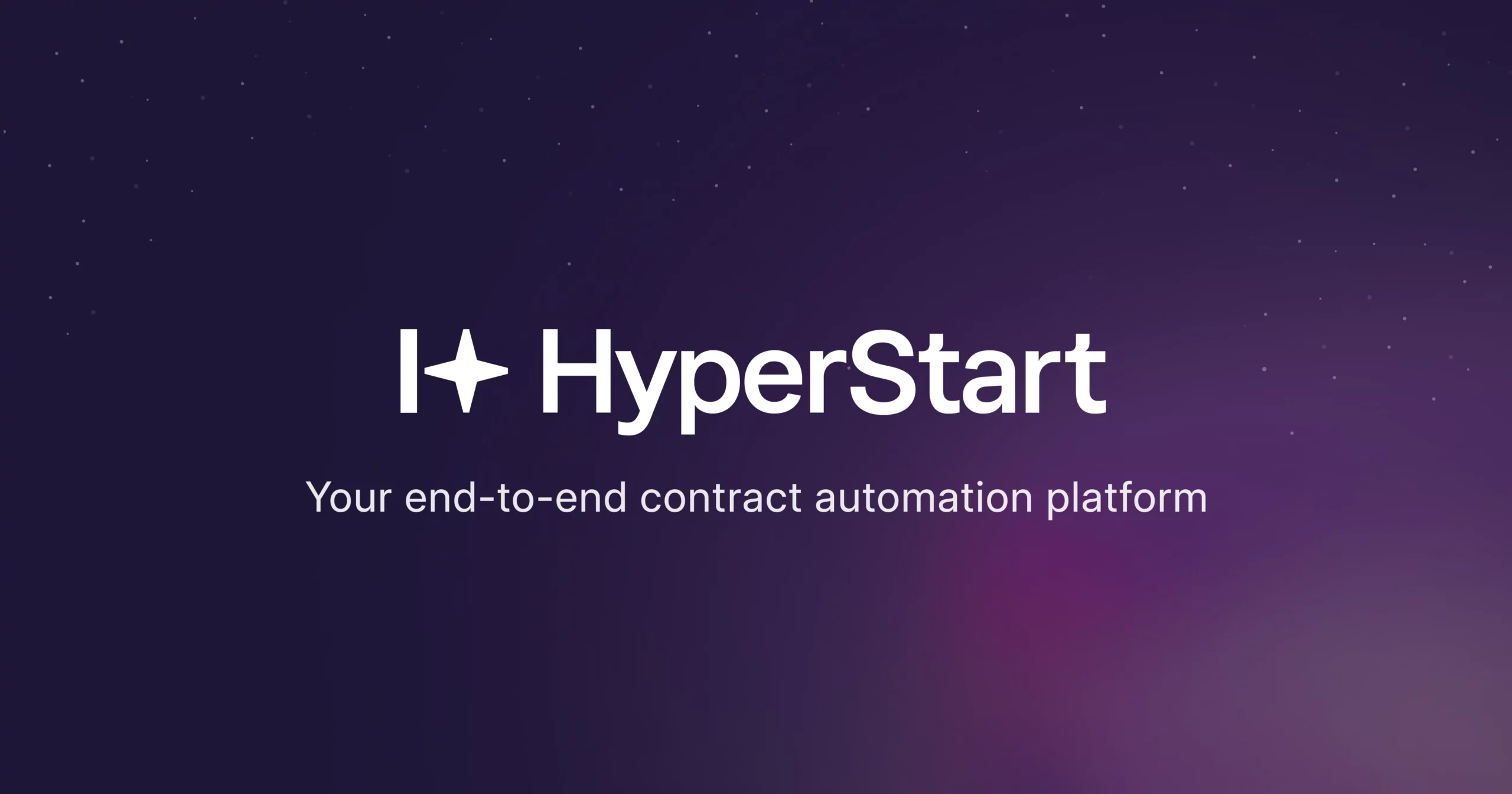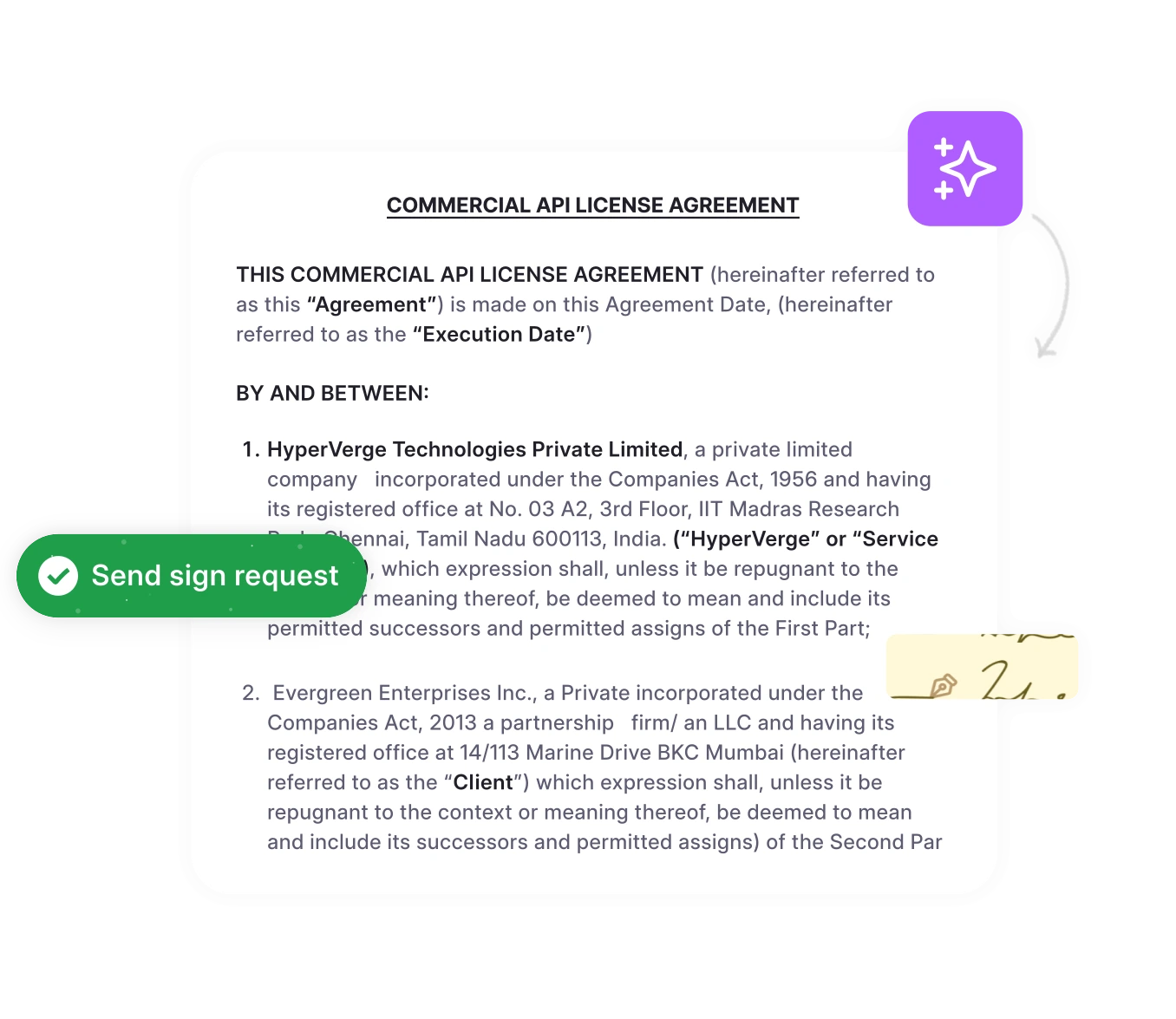Your organization manages dozens of copyright contracts – licensing agreements, publishing rights, and content permissions. Hidden in these contracts are critical contract obligations: royalty payments due next week, territorial restrictions that could trigger violations, or renewal deadlines for valuable IP rights.
Managing copyright contracts manually can cost companies over $ 200,000 annually from missed renewals alone. Legal teams waste 80% of their time tracking terms instead of negotiating better deals. Whether you’re a publisher managing author agreements or a media company juggling content licenses, copyright contract chaos is expensive.
This guide examines how AI-powered contract management streamlines the complexity of copyright management, automating rights tracking, royalty calculations, and renewal management.
What is a copyright contract, and why does it matter?
A copyright contract, often referred to as a copyright license agreement, is a legally binding document in which the copyright owner (the licensor) grants permission to another party (the licensee) to use their copyrighted work under specified terms.
This contract specifies how the copyrighted material can be used, the duration of usage, the territories covered, payment terms including fees and royalties, and other conditions to protect the rights of the creator while allowing controlled use by others.
The copyright contract is important because it clearly defines the rights and responsibilities of both parties, thereby preventing disputes over usage, compensation, and quality control. It enables copyright owners to monetize their creations without relinquishing ownership, while licensees gain legal authorization to use the work for specific purposes.
Such agreements are crucial in industries such as entertainment, publishing, and technology, where copyrighted materials, including music, books, software, and artistic works, are frequently licensed.
Copyright protection exists automatically when an original work is fixed in a tangible medium of expression; no registration is required to secure initial rights.
Read →
However, HyperStart recommends registering your copyright with the U.S. Copyright Office before licensing. Registration provides a legal presumption of ownership and enables statutory damages in infringement cases.
Streamlining Contract Reviews
Automate and accelerate your copyright contract reviews with AI-powered workflows that ensure timely approvals, reduce bottlenecks, and improve accuracy.
Book a DemoWhat are the hidden costs of manual copyright management?
Managing copyright contracts in spreadsheets feels manageable until it isn’t. The true cost reveals itself in missed opportunities, legal risks, and damaged relationships that directly impact your bottom line.
1. Revenue loss from missed copyright renewals
Every copyright contract has an expiration date. Miss it, and you lose the rights. Organizations lose an average of $200K+ annually from missed copyright renewals alone. That’s valuable intellectual property walking out the door because a renewal date was buried in a spreadsheet.
The impact compounds quickly. A streaming platform failed to renew its license for a popular content library. By the time a legal notice was given, the rights holder had already negotiated with a competitor. Result: 30% subscriber churn in one quarter, millions in lost revenue.
Industry Example: A major publishing house missed the contract renewal deadline for a bestselling author’s backlist titles. The author moved to a competing publisher, taking 15 years of catalog revenue with them. The oversight? A single cell in an Excel sheet among 2,000+ active contracts.
2. Legal risk from territorial and usage violations
Copyright contracts are filled with restrictions – where you can distribute, how you can use content, and what modifications are allowed. Manual tracking makes contract compliance violations inevitable. One unauthorized use can trigger penalties ranging from $750 to $150,000 per infringement.
Your marketing team launches a global campaign using licensed creative. But buried on page 47 of the licensing agreement: “North America only.” Now you’re facing international copyright violations across 15 countries.
Industry Example: A software company incorporated open-source code with GPL licensing into its proprietary product. They missed the “copyleft” clause requiring them to open-source their entire codebase. The fix? Either release their competitive advantage or rebuild the entire product architecture. Both options cost millions.
3. Damaged relationships through royalty miscalculations
Creators depend on royalty payments. Miss a payment or miscalculate the amount, and you’ve damaged more than cash flow – you’ve broken trust. Recovery takes years, if it happens at all.
Manual royalty contract tracking means calculating payments across different rates, territories, and usage types. One formula error affects every creator in your portfolio. They notice immediately. You might not catch it for months.
Industry Example: A media distribution company’s Excel formula error underpaid 200+ content creators for six months. Beyond the $450K in back payments and penalties, 40% of creators refused to renew their contracts. The reputational damage spread through industry forums, making new creator acquisition nearly impossible.
4. Failed audits and IP portfolio gaps
Due diligence and compliance audits expose every gap in your copyright management. Without organized documentation, you can’t prove ownership or rights when investors, acquirers, or regulators come calling.
During the acquisition process, buyers typically examine your IP portfolio first. Missing or unclear copyright documentation and title chains can reduce valuation by 20-30%. Some deals die entirely over IP uncertainty.
Industry Example: A digital agency preparing for acquisition was unable to produce work-for-hire agreements for client projects from the previous five years. The private equity buyer reduced its offer by $3 million to account for potential copyright claims. The agency’s manual filing system had lost critical contracts during office moves and system migrations.
If registration is made within 3 months after publication, statutory damages and attorney’s fees are available to the copyright owner in infringement actions.
Read →
Key elements of a copyright contract
| Key Element | Description |
| Grant of License | Specifies the scope of rights granted to the licensee, such as copying, distributing, performing, or adapting the work. Defines whether the license is exclusive or non-exclusive. |
| Restrictions and Limitations | Describes the permitted and prohibited uses of the copyrighted work, including any limits on changes, sublicensing, or uses outside specified purposes. |
| Contract Duration and Territory | Defines the length of time the license is valid and the geographical area where the licensee can use the rights. May include renewal terms. |
| Payment Terms | Outlines the fees, royalties, or compensation the licensee must pay the licensor, including a payment schedule and audit rights to verify payments. |
| Credit and Attribution | Specifies requirements for giving credit to the copyright owner or creator when the work is used or distributed. |
Why do copyright contracts matter?
Copyright contracts matter for several important reasons:
1. Legal protection for creators and businesses
Copyright contracts give creators and owners legal control over how their works are used and distributed. This protection is essential to prevent unauthorized use or infringement, allowing creators to enforce their rights and seek remedies such as damages or injunctions if infringements occur.
2. Monetization of intellectual property
Through copyright contracts, creators can license or sell usage rights in their works to others, generating income via fees, royalties, or other compensation. This enables businesses and creators to capitalize on their intellectual property and incentivizes further creativity and innovation.
3. Avoiding disputes and infringement risks
Clearly defined copyright contracts help to establish ownership, usage limits, and responsibilities between parties. This clarity reduces the likelihood of legal contract disputes, misunderstandings, or unauthorized exploitation of copyrighted works.
4. Ensuring clarity and accountability in usage
Copyright contracts establish specific terms for the use, distribution, and reproduction of copyrighted materials, thereby safeguarding the interests of both licensors and licensees. These contracts also often include provisions for credit attribution and post-agreement obligations, fostering accountability and respect for the original work.
Copyright contracts are vital tools that protect creative assets, support the generation of economic value, and foster trust and transparency between creators and users of copyrighted materials.
3 Common copyright contract challenges and their consequences
| Challenges | Explanation | Effective Solution |
| Managing scattered agreements | Many businesses hold copyright contracts in various departments, emails, or physical files. This fragmentation makes it difficult to locate contracts quickly, increasing the risk of overlooking key terms or losing important documents. | Implementing a centralized digital contract management system allows all copyright agreements to be stored in one secure, searchable location. This improves transparency, eases audit processes, and saves time when retrieving contracts. Automated indexing and tagging further enhance accessibility. |
| Missed renewal deadlines | Copyright licenses often have fixed terms requiring renewal to maintain usage rights. Missing renewal deadlines can cause legal exposure, forced discontinuation of usage, or even loss of revenue streams from licensing. | Using contract management software that supports automated calendar alerts and notifications for upcoming renewals ensures contracts are reviewed and acted on on time. Establishing clear internal workflows for renewal approval minimizes risks of expirations. |
| Tracking and compliance issues | Copyright contracts usually contain complex clauses regarding permitted uses, royalties, geographic limits, and attribution. Tracking whether all parties are adhering to these terms can be challenging, increasing risks of non-compliance or disputes. | Deploying contract lifecycle management (CLM) tools helps monitor contractual obligations continuously. Tools with reporting and audit capabilities enable organizations to verify compliance with payment terms, usage restrictions, and other conditions, allowing proactive issue resolution. |
Pro Tip: Include a severability clause stating that if one provision is invalid, the remaining provisions stay in force. This protects the entire agreement from collapsing due to a single problematic clause.
4 Best practices for drafting and managing copyright contracts
1. Clear, specific terms and conditions
Draft contracts with precise, unambiguous language to clearly define the rights and obligations of each party. Specify the scope of the license, permitted uses, payment terms, duration, termination clauses, and attribution requirements. Avoid legal jargon or vague terms that may lead to misunderstandings or disputes. Use well-structured sections with headings for easy navigation and reference.
2. Using templates and legal counsel
Start with standardized templates tailored to copyright and intellectual property agreements, then customize them for the specific context. Engage legal professionals to review and advise on the contract draft to ensure it complies with applicable laws and adequately protects your interests. Legal counsel helps identify risks and craft clauses suited to business needs, minimizing future conflicts.
3. Maintaining records and renewal alerts
Store copyright contracts centrally using digital contract management solutions to archive and organize agreements securely. Implement automated alerts and reminders for key milestones like renewal deadlines to prevent lapses that could cause loss of rights or revenue. Keeping accurate records facilitates audits, compliance monitoring, and rapid retrieval during negotiations or disputes.
4. Negotiating favorable terms
Approach contract negotiation with clear objectives and knowledge of your rights and market standards. Aim for terms that maximize economic value and control over your intellectual property, including fair royalty rates, termination rights, and quality control. Open dialogue and flexible negotiation help balance the needs of licensors and licensees, fostering stronger business relationships.
Applying these best practices enhances the legal strength, clarity, and manageability of copyright contracts, helping creators and businesses safeguard their intellectual assets while enabling profitable collaborations.
Automate copyright contract management with HyperStart CLM
HyperStart CLM automates copyright contract management by centralizing all contracts in one secure platform. It uses AI to extract key contract terms with 94% accuracy, streamlining tracking of renewal dates and obligations. The platform offers dynamic contract drafting templates, eSignature options, version control, and automated renewal alerts to prevent missed deadlines.
By automating these processes, HyperStart CLM reduces manual work, accelerates contract approvals, and ensures legal compliance—helping businesses protect and monetize their copyrighted works efficiently.
Stop losing deals to contract delays
Extract licensing terms automatically. Track renewals. Monitor compliance. Get full portfolio visibility.
Book a Demo









